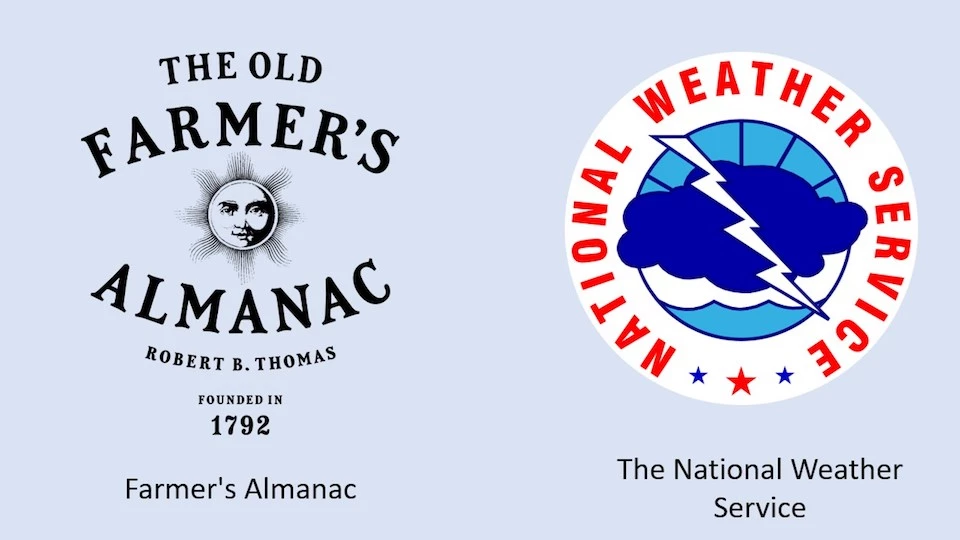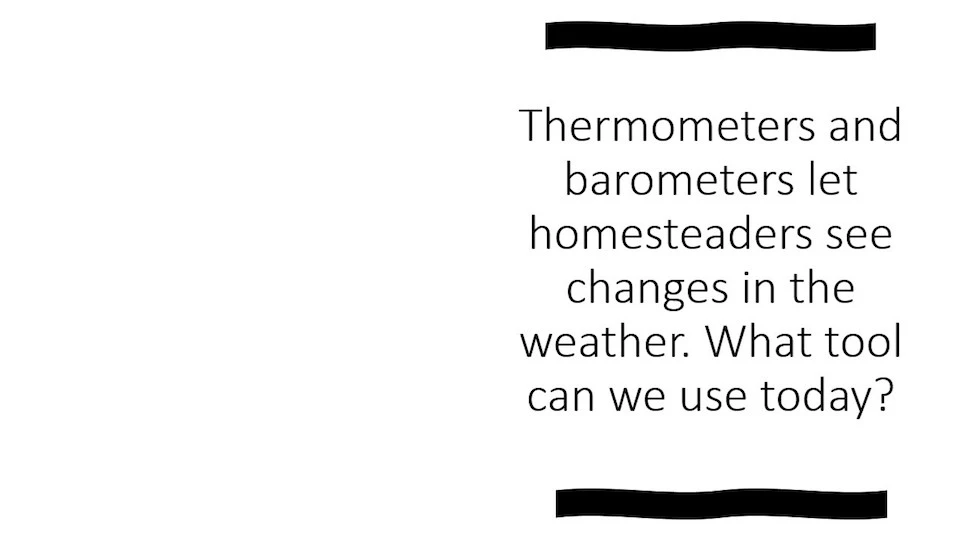Last updated: April 22, 2020
Article
The Power of Observation: Homesteaders and Weather

What is the weather going to be like tomorrow?
In this day and age, we can find this information with the flick of a finger and some decent cell service. With the lack of technology and communications, homesteaders had to think differently and rely on whatever tools they had. Farmers almanacs made good resources, but observation was one of the best tools a homesteader traveled with, not to mention it was also easy to transport!What are some observation tools we have today and how do they compare to what homesteaders used?
Read the questions below, once you are ready, slide to reveal the answer.


Left image
The Old Farmer's Almanac logo
Right image
Farmer's almanacs helped homesteaders to predict the weather. What agency works to do this today?


Left image
Historic Barometer
Right image
Thermometer and barometers let homesteaders see changes in the weather. What tool can we use today?


Left image
Storm clouds develop over the prairie.
Right image
Observation was often a homesteader's last warning before a storm. What is one tool we can use for this today?

How can your observations of the environment around you help to predict the weather?
Homesteaders learned quick tricks to help prepare for the days ahead. For instance, if they observed geese flying over head they could use their altitude to judge the air pressure. A simple saying made this quite easy to remember.
This saying refers to the goose's altitude, rather than the pitch of it's honk. Geese aim to fly at optimal air density. When the air pressure is high, the best density for geese to fly is high in the air, when it is low, the opposite is true. Low pressure moving into an area generally brings clouds, rain, and occasional storms.
Mercury Barometers
A barometer is an instrument measuring atmospheric pressure, used especially in forecasting the weather and determining altitude. If a homesteader had a barometer in their home, they could observe it to get a sense of when the weather was changing.This is a simple saying about reading barometric pressure. The "glass" referred to here is the tube of glass in a barometer that housed mercury. As the mercury sank in the tube, it meant there was low pressure already in, or moving into the area. The opposite was true when the "glass" was high, when the mercury rose, it was a sign of good weather in the area.
